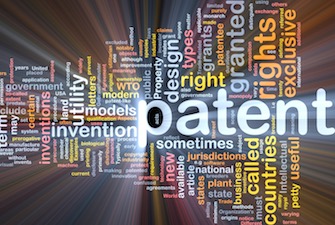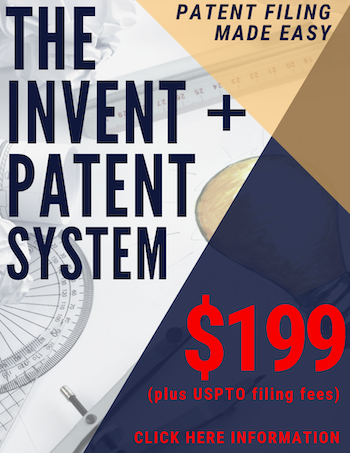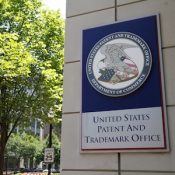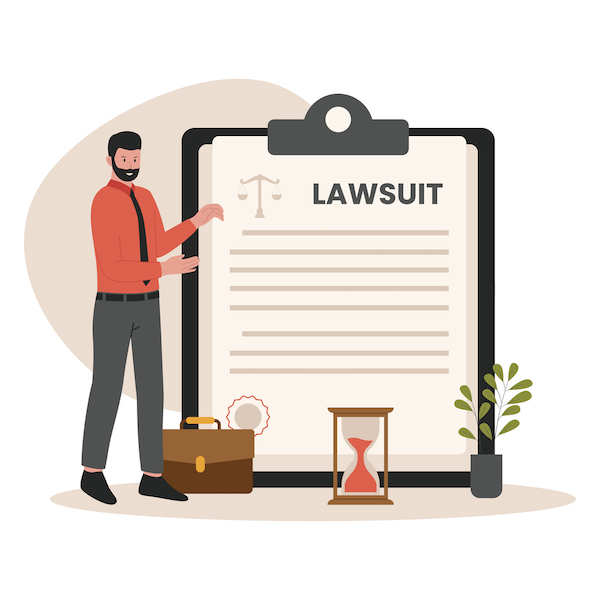 According to the patent statute, anyone who invents or discovers a new and useful invention, or improvement thereof, may obtain a patent. See 35 U.S.C. § 101. The requirement that the invention be useful is called the utility requirement. In essence, in order for an invention to be useful the invention must work. It can work crudely, but it has to do what is claimed.
According to the patent statute, anyone who invents or discovers a new and useful invention, or improvement thereof, may obtain a patent. See 35 U.S.C. § 101. The requirement that the invention be useful is called the utility requirement. In essence, in order for an invention to be useful the invention must work. It can work crudely, but it has to do what is claimed.
In order for a patent applicant to satisfy the utility requirement the claimed invention must be “useful” for some purpose either explicitly or implicitly. Most often the applicant will make explicit utility statements in a patent application, but this is not always necessary. For example, if you were to invent a new and improved hammer the utility of the device would be apparent. Still, given that the utility requirement is a low threshold requirement there is little to be gained by hiding the ball and relying on what is implicitly disclosed or inherently present in the invention.
Utility problems normally arise in one of two scenarios. First, it is not apparent why the invention is “useful,” which can occur when an applicant fails to identify any specific and substantial utility (more in a minute on this) for the invention or fails to disclose enough information about the invention to make its usefulness immediately apparent to those familiar with the technological field of the invention. Second, there are rare instances where an assertion of a specific and substantial utility for an invention is simply not credible. For example, well-established principles of science teach that it is impossible to create a perpetual motion machine. Thus, perpetual motion machines are not patentable because they are not useful because they cannot exist. For more on perpetual motion machines see The Patent Law of Perpetual Motion.
Specific Utility
The term “useful” used with reference to the utility requirement can be a difficult term to understand. Where a patent applicant has set forth a specific and substantial utility, courts are reluctant to uphold a utility rejection issued by a patent examiner solely on the basis that the applicant’s opinion seems implausible. Indeed, practical considerations require the Office to rely on the inventor’s understanding of his or her invention in determining whether and in what regard an invention is believed to be “useful.” Because of this, patent examiners are instructed rely on assertions made on behalf of patent applicants (such as in affidavits) that an invention is “useful” for a particular reason. This can, however, lead to interesting situations where inventions that seem quite clearly to be inoperative are still nevertheless patented, as sometimes has happened when certain questionable “medical innovations” are patented, such as for example magnet therapies.
Notwithstanding, a utility specific to the subject matter claimed is required. To understand what this means it is most helpful to contract this with what would be called a “general utility,” which is utility that would be shared across a broad class of the invention. For example, all paper napkins are disposable. So if you were to invent a new and improved paper napkin it would not be enough to say that your paper napkin is disposable. That would be a general utility statement that is not specifically tied to the invention. But perhaps your paper napkin is unique because it more quickly biodegrades. Saying that it is disposable does not distinguish the invention from everything else in the same class, but focusing on the unique biodegradability would be a specific utility that is tied to the invention.
Substantial Utility
In addition to having a specific utility a claimed invention must also have a substantial utility. The purpose of this requirement is to make sure that the invention is useful to the public as disclosed in its current form, not that it may prove useful at some future date after further research. In other words, in order for an invention to have a substantial utility it must have a significant and presently available benefit. Thus a “substantial utility” defines a “real world” use. Unfortunately, utilities that require or constitute carrying out further research to identify or reasonably confirm a “real world” context of use are not substantial utilities.
Inoperative Inventions
Inoperative inventions lack utility because if the invention does not work it cannot be useful. But this does not mean that the invention must work well. Even crude inventions or those that perform poorly would satisfactorily satisfy the utility requirement. Thus, in order for an invention to lack utility because it is inoperative the invention must not work at all. This means that the lack of utility cannot be sustained without proof of total incapacity. If an invention is only partially successful in achieving a useful result, a rejection of the claimed invention as a whole based on a lack of utility is simply not appropriate.
 Returning to the perpetual motion machine example earlier discussed, if an applicant were to claim a perpetual motion machine they would face a utility rejection and ultimately would have to prove perpetual motion has been achieved by producing a working prototype. The requirement for a working prototype is extremely rare in the patent world, and in fact only applies to those claiming a perpetual motion machine. Ordinarily, when a utility claim is made that is not credible the applicant would conduct tests and submit affidavit evidence to demonstrate to the patent examiner that the invention does in fact work as described, thereby overcoming the utility rejection. Once upon a time hair regrowth treatments and associated compounds were rejected due to a lack of utility because science taught that it was impossible to regrow hair on a bald head. In time it was demonstrated that compounds and treatment regimens could regrow hair in at least some situations, which meant the inventions did work and had sufficient utility.
Returning to the perpetual motion machine example earlier discussed, if an applicant were to claim a perpetual motion machine they would face a utility rejection and ultimately would have to prove perpetual motion has been achieved by producing a working prototype. The requirement for a working prototype is extremely rare in the patent world, and in fact only applies to those claiming a perpetual motion machine. Ordinarily, when a utility claim is made that is not credible the applicant would conduct tests and submit affidavit evidence to demonstrate to the patent examiner that the invention does in fact work as described, thereby overcoming the utility rejection. Once upon a time hair regrowth treatments and associated compounds were rejected due to a lack of utility because science taught that it was impossible to regrow hair on a bald head. In time it was demonstrated that compounds and treatment regimens could regrow hair in at least some situations, which meant the inventions did work and had sufficient utility.
Utility Drafting Problems
Failure to appreciate what it means to be inoperative is a serious problem for independent inventors and novices who are representing themselves. Inventors all too frequently fail to describe versions of their invention that do not work optimally, or that perform poorly. In fact, I’ve been told numerous times by inventors that no one would ever make an invention that way or do a certain thing because it would be clearly inferior and therefore quite stupid. Perhaps that is true, but if someone were to copy your invention and use an obviously inferior version wouldn’t you want to be able to stop them? If you never described it in your patent application you won’t own that right and they could compete against you with an inferior product, but one that some may see as a substitute. Worse yet, they may push inferior products into the market and damage the entire market even for your higher quality product that performs at a high level.
The trick with drafting a patent application is to define anything that will work, no matter how crude, no matter how defective. You want to capture everything. The only power of a patent is to prevent others from doing what is covered in the patent. If you are making money there will be others who want to do what you are doing, which should be obvious by the very real problems presented by counterfeiters, for example.
Your patent can prevent them from doing what you are doing, but a strong patent will also prevent would-be-competitors from doing anything that is close. You want to prevent would-be-competitors from directly competing and from competing with substitutes, even substitutes that are inferior. Think of the patent as creating a wall around your invention. You do not have to use all of what you capture/define in your patent application, but having it will create the barrier to entry that can insulate you from copyists. It may also create a licensing opportunity because it is possible that while you stick to higher end products another might want to license your rights to sell at a lower price point.
For more information on the basics of patent law please see:
- Patent Basics: Practice Tips for Achieving Success in Inter Partes Reviews
- An Alternative to Claim Mirroring in Initial Patent Application Filing
- IP Goes Pop! You Can’t Do That – What IP Cannot Protect
- How to Use the USPTO Patent Public Search Tool
- Using Analytics to Assess the Effectiveness of Common Patent Prosecution Practices
- Tips from a Former Examiner on How to Conduct Interviews at the USPTO
- Ten Mistakes to Avoid When Drafting Information Disclosure Statements
- Defanging Descriptive Material Rejections
- Can You Refile a Provisional Patent Application?
- Ten Common Patent Claim Drafting Mistakes to Avoid
- It’s All in the Hardware: Overcoming 101 Rejections in Computer Networking Technology Classes
- Disclosure Requirements in Software Patents: Avoiding Indefiniteness
- Patent Procurement and Strategy for Business Success Part III: Prosecution – Wielding an Invisible Hand
- Patent Procurement and Strategy for Business Success Part II: Claims – Targeting the Right Infringers
- Patent Procurement and Strategy for Business Success: Building and Strategically Using Patents that Target the Right Infringers and Thwart Competitive Countermeasures
- Fit to Drive: Three Inspiring Office Action Responses from the USPTO’s Art Unit 3668
- Design Patents 101: Understanding Utility Patents’ Lesser-Known Cousin
- Two Key Steps to Overcome Rejections Received on PCT Drawings
- Errors in Issued Patents as a Measure of Patent Quality
- Intellectual Property for Startups: Building a Toolkit to Protect Your Products and Design
- Why the Patent Classification System Needs an Update
- Understanding What a Design Patent is Not
- Design Patents: Under Utilized and Overlooked
- Deciding Where to Obtain International Patent Rights
- When to Use the Patent Cooperation Treaty—and Why It’s So Popular
- Why and When Design Patents are Useful
- PCT Basics: Obtaining Patent Rights Around the World
- ipAwarenessAssessment: Inventors and Business Owners Should Start Their IP Journey with this USPTO-NIST Tool
- Successful After Final Petitions Can Help Advance Prosecution (Part V)
- From Agent to Examiner and Back Again: Practical Lessons Learned from Inside the USPTO
- WIPO’s INSPIRE Offers a New Way to Select Databases for Patent Searches Involving Machine Translations
- Understand Your Utility Patent Application Drawings
- Why It’s Time to Board the PCT Train: The Benefits of Filing U.S. Patent Applications via the PCT First
- Implications of Filing Subsequent Patent Applications in the United States (Part III)
- Types of Subsequent Patent Applications in the United States (Part II)
- Getting a Patent: The Devastating Consequences of Not Naming All Inventors
- Getting A Patent: Who Should be Named as An Inventor?
- Make Your Disclosures Meaningful: A Plea for Clarity in Patent Drafting
- Applying for a Patent in Germany
- Autopilot or Advocate? Raising the Bar in Ex Parte Appeals at the USPTO
- Time to ‘Think PCT’: Rethink Your Global Patent Strategy to Preserve Your Seat at the Table
- Patent Office Insights from Two Former Examiners
- Conventional Patent Wisdom Revisited
- Develop Your Database of Templates for Responding to Office Actions
- Background Pitfalls When Drafting a Patent Application
- Eight Tips to Get Your Patent Approved at the EPO
- Four Things C-Suite Executives Need to Know About Patents
- Starting the Patent Process on a Limited Budget
- What to Know About Drafting Patent Claims
- Beyond the Slice and Dice: Turning Your Idea into an Invention

![[IPWatchdog Logo]](https://ipwatchdog.com/wp-content/themes/IPWatchdog%20-%202023/assets/images/temp/logo-small@2x.png)

![[[Advertisement]]](https://ipwatchdog.com/wp-content/uploads/2018/10/Enhance-1-IPWatchdog-Ad-2499x833-1.png)
![[Advertisement]](https://ipwatchdog.com/wp-content/uploads/2024/04/Patent-Litigation-Masters-2024-sidebar-early-bird-ends-Apr-21-last-chance-700x500-1.jpg)

![[Advertisement]](https://ipwatchdog.com/wp-content/uploads/2021/12/WEBINAR-336-x-280-px.png)
![[Advertisement]](https://ipwatchdog.com/wp-content/uploads/2021/12/2021-Patent-Practice-on-Demand-recorded-Feb-2021-336-x-280.jpg)
![[Advertisement]](https://ipwatchdog.com/wp-content/uploads/2021/12/Ad-4-The-Invent-Patent-System™.png)







Join the Discussion
3 comments so far.
David Stein
November 10, 2015 11:03 amAnon: I completely agree with you.
The courts feel differently.
Anon
November 10, 2015 10:32 amDavid,
There is no distinction under the law for any difference in “utility” between the different art fields.
I would daresay that ANY attempt by either the judicial branch or the executive branch is necessarily ultra vires (and even unconstitutional), and is thus without proper force of law.
David Stein
November 10, 2015 12:03 amI’d say that this is a great summary of the “utility” requirement for mechanical, electrical, and non-biotech chemical inventions – and was a good summary for the requirement for biotech chemicals, software, and business methods under State Street.
However, the article needs a gigantic asterisk next to it, in 1,024-point font, indicating that the Court’s extensive rationale of the Alice framework is lashed onto the § 101 utility requirement.
It’s quite a feat of jurisprudential fabrication, isn’t it? 40-plus years of whole-cloth legal requirements, and wrangling over terms like “abstract” and “laws of nature” and “natural phenomena” and “significantly more” and “insignificant post-solution activity” and “mathematical algorithm” and “naturally occurring products” – all spun out of one word in the statute: useful.